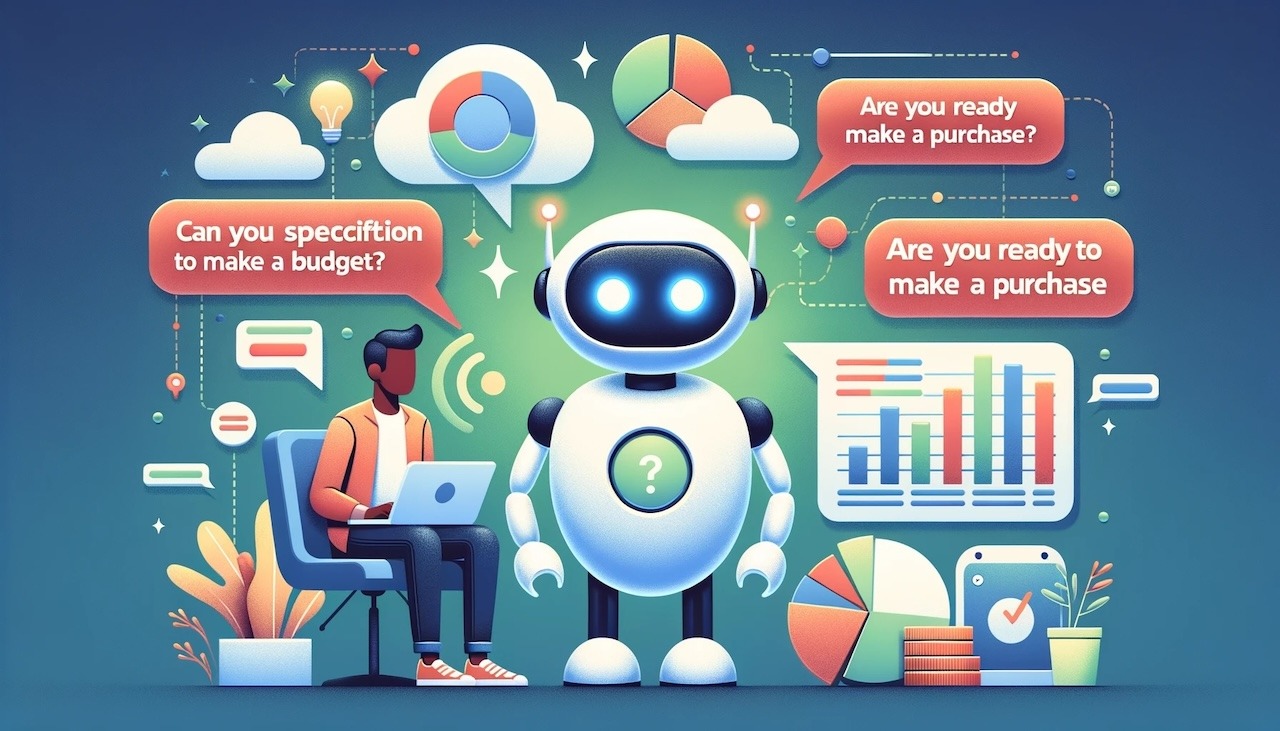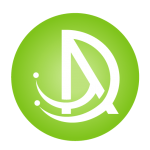Chatbots are quickly becoming an invaluable tool for businesses looking to qualify leads more efficiently. By automating conversations, chatbots allow companies to engage prospects instantly, ask targeted questions, and separate high-potential leads from the pack.
For small business owners struggling to nurture promising new leads, chatbots may provide the perfect solution.
Table of Contents
- Key Takeaways
- Introduction to Lead Qualification with Chatbots
- The Role of Chatbots in Lead Qualification
- Key Facts and Figures about Chatbots and Lead Qualification
- The Process of Lead Qualification using Chatbots
- Asking Relevant Questions to Understand Needs and Preferences
- Comparing Responses to Predefined Qualification Criteria
- Scoring and Prioritizing High Potential Leads
- The Benefits of Using Chatbots for Lead Qualification
- Instant Engagement and Personalized Interactions
- Timely Follow-up and Increased Conversion Chances
- Handling Multiple Interactions Simultaneously
- Case Study: HubSpot’s Chatbot System for Lead Qualification
- How HubSpot Uses Chatbots to Qualify Leads
- Integration of Chatbots with Other Inbound Marketing Tools
- Wrap Up
Key Takeaways
- Chatbots can help businesses qualify leads by asking relevant questions and comparing responses to predefined criteria.
- Using chatbots for lead qualification can result in more high-quality leads and increased conversion chances.
- Chatbots provide instant engagement, personalized interactions, and timely follow-up, improving the overall lead qualification process.
- Chatbots have the capability to handle multiple interactions simultaneously, reducing response times and increasing efficiency.
- HubSpot offers a chatbot system for lead qualification that integrates with other inbound marketing tools.
Introduction to Lead Qualification with Chatbots
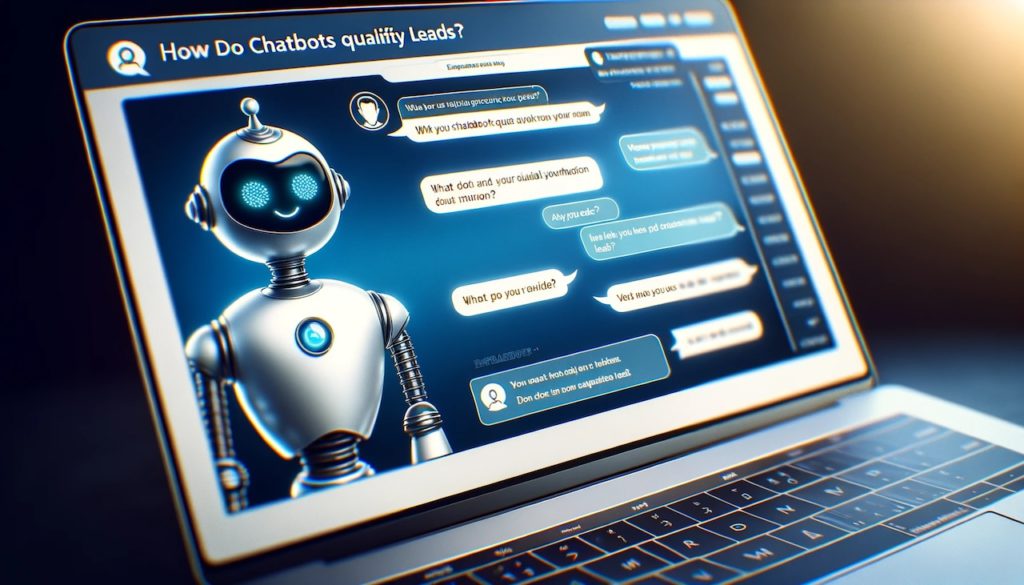
Lead qualification is a crucial process for businesses looking to identify and prioritize high-potential leads. With limited sales bandwidth, it’s vital to focus energy where it will generate the greatest return. Chatbots provide an excellent way to qualify leads instantly through conversational interactions.
Chatbots can be programmed with a predefined set of qualifying criteria and questions to engage visitors and gather key details like needs, challenges, budget, authority, etc. Based on the prospect’s responses, chatbots score leads and segment them into different categories like hot, warm, or cold. Hot leads that match the ideal customer profile can be routed to sales teams for timely follow-up.
The conversational capabilities of chatbots allow them to deliver personalized interactions at scale to understand prospect needs. At the same time, integrating chatbots with marketing automation and CRM platforms provides a way to unify lead data for a coordinated follow-up. With their ability to nurture promising leads 24/7, chatbots are becoming the secret sales weapon for forward-thinking businesses.
The Role of Chatbots in Lead Qualification
Chatbots play a critical role in qualifying leads through automated conversational interactions. They can initiate quick engagements with visitors to gather relevant details for lead scoring. Based on the prospect’s responses to qualifying questions, chatbots categorize leads as hot, warm or cold.
For example, if a visitor shows interest in a product demo, pricing details, or content offer, they may be tagged as a hot lead. The chatbot can collect key information like name, company, role, challenges, and expectations. It can further prioritize leads by assigning scores based on the quality of responses. Leads that align with the ideal customer profile get higher scores.
The conversational capability of chatbots delivers a personalized experience to prospects while qualifying them. The chatbot can address website visitors by name and provide tailored solutions for their needs. If a lead remains unresponsive to initial qualifying questions, the chatbot can make attempts to re-engage them through follow-up messages.
Integrations with marketing automation platforms allow qualified leads to enter automated nurturing workflows for timely sales follow-ups. By continually qualifying and routing promising leads, chatbots act as the first line of engagement that connects prospects with relevant sales conversations.
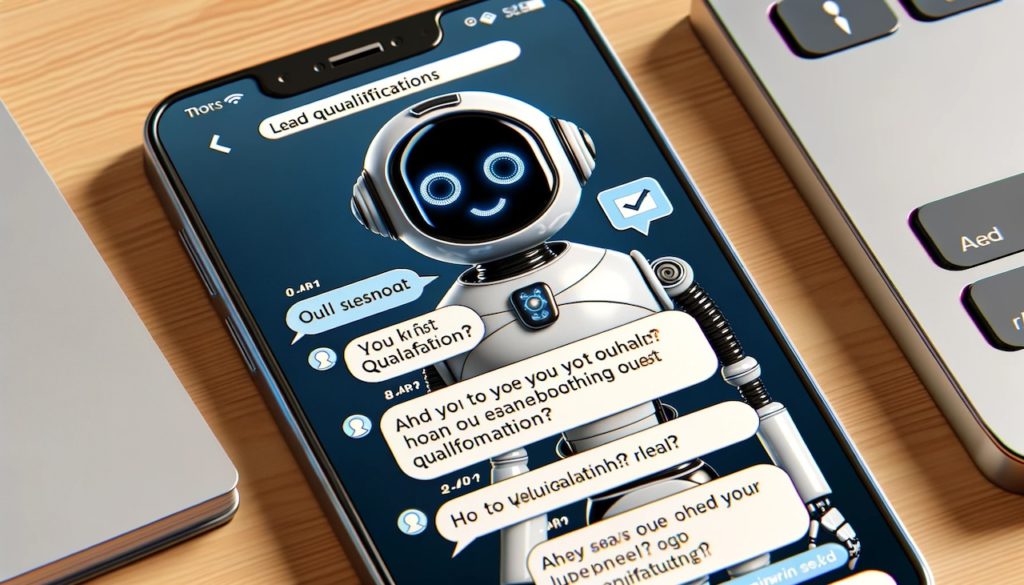
Key Facts and Figures about Chatbots and Lead Qualification
Chatbots have become a game-changing tool for qualifying leads more efficiently. Here are some key facts and figures that showcase their value:
- 55% of businesses using lead qualification bots received more high-quality leads, according to Salesmate.
- 67% of sales reps lose deals due to poor lead qualification, presenting a huge area for chatbots to fix this issue (Salesmate).
- 40% of Millennials engage with bots daily, showing the wide adoption of this technology (Quora).
- 90% of businesses resolved complaints faster after deploying chatbots, demonstrating their capabilities (Quora).
- Chatbots can ask qualifying questions, compare responses to criteria, score leads, and identify promising ones for follow-up (Botpress).
- They provide instant, personalized interactions at scale and enable timely follow-up to increase conversion rates (Botpress).
The numbers speak for themselves – chatbots have become an indispensable way for small businesses to engage and qualify promising leads in a scalable manner. Their automated conversational capabilities provide the ideal solution for nurturing potential customers.
The Process of Lead Qualification Using Chatbots
Chatbots follow a defined process to qualify leads through conversational interactions. Here are the key steps involved:
Asking Relevant Questions to Understand Needs and Preferences
The first step is to engage visitors and ask a series of smart questions to gather details. The chatbot can be programmed with qualifying questions to uncover:
- Pain points they are facing
- Challenges in their role or industry
- Interest in the company’s offerings like products, content, or events
- Timeline or urgency to solve a problem
- Budget and spending capacity
Based on the prospect’s responses, the chatbot builds a profile to understand their needs and preferences.
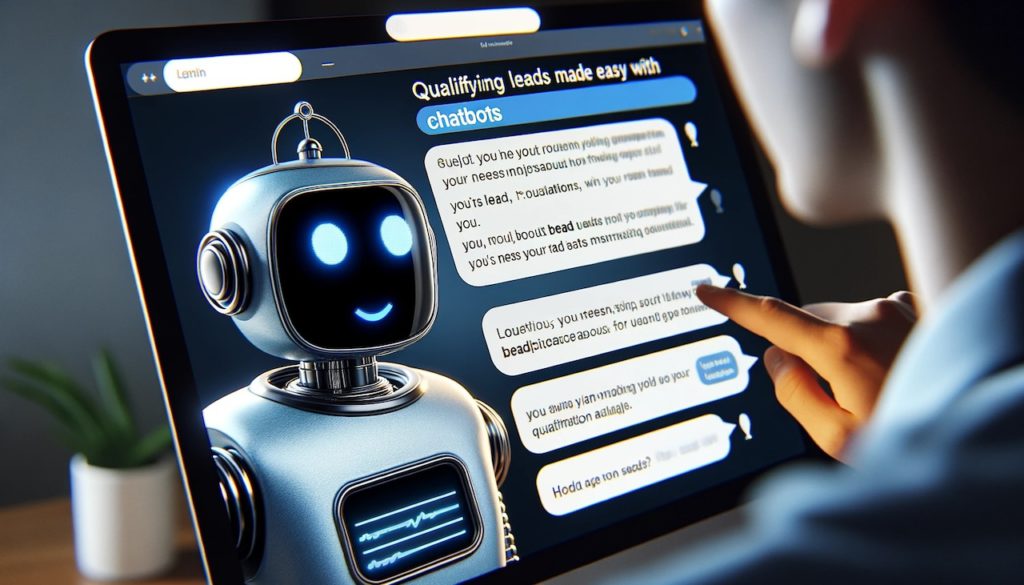
Comparing Responses to Predefined Qualification Criteria
Next, the chatbot analyzes the prospect’s responses and compares them to ideal customer criteria predefined in the system. This criteria can include:
- Demographic details like company, industry, role
- Firmographic details like company size, revenue
- Behavioral traits like interests, challenges, timeline
Matching responses to the predefined criteria allows the chatbot to categorize leads as hot, warm, or cold.
Scoring and Prioritizing High Potential Leads
Finally, the chatbot assigns a score to leads based on the quality of responses. Prospects who closely match the ideal criteria get higher scores. Additional points can be assigned for positive indicators like urgency to buy, interest in premium offerings, or potential budget.
The scored leads are segmented and prioritized so promising conversations are routed faster to sales teams. Hot leads are handed off immediately while warm leads go into nurture workflows.
The Benefits of Using Chatbots for Lead Qualification
Instant Engagement and Personalized Interactions
One of the biggest benefits of using chatbots for lead qualification is the ability to instantly engage with prospects and deliver personalized conversations. As soon as a visitor lands on the website, the chatbot can proactively reach out with a friendly greeting. If the prospect responds, the bot can start qualifying them through relevant questions and recommendations tailored to their needs.
This real-time qualification provides a major advantage compared to contact forms which have to be filled out. Chatbots bring human-like conversations to the digital world with personalized messages like “Hi [visitor name], I noticed you were browsing our analytics features. Are you looking to track website data to improve performance?” These customized interactions make prospects feel valued from the start.
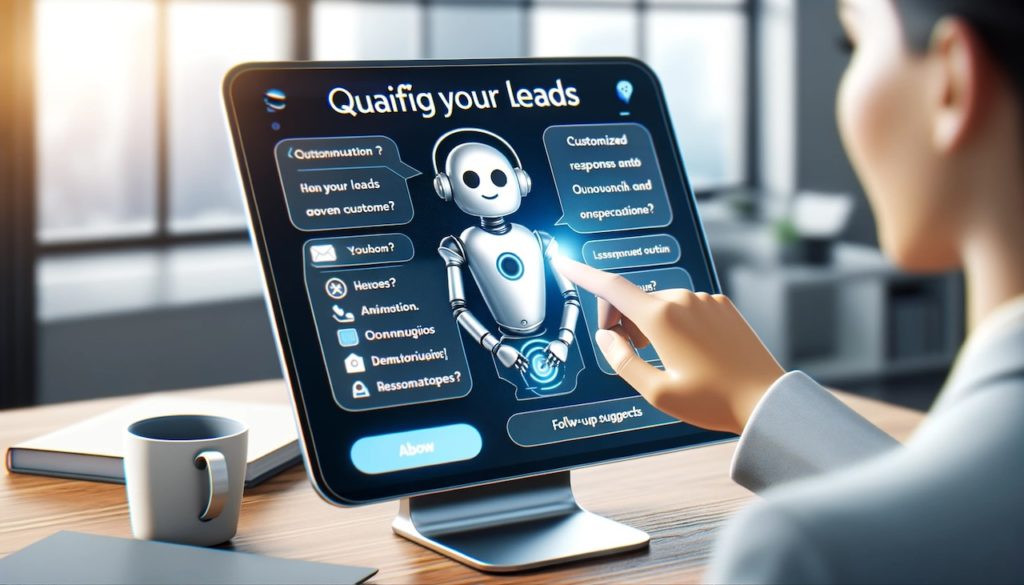
Timely Follow-up and Increased Conversion Chances
Another advantage of chatbots is enabling timely follow-up with hot leads to nurture them when interest is peaked. Instead of leads falling through the cracks waiting for sales rep outreach, they are sent to reps immediately after qualifying. This significantly shortens response times and leads to higher conversion rates.
Chatbots also allow 24/7 qualification without sales team bandwidth limitations. Prospects can be nurtured after working hours or weekends when reps are unavailable. This increased engagement window means more leads are captured and processed.
Handling Multiple Interactions Simultaneously
Finally, chatbots can handle multiple conversations at the same time, qualifying leads at scale. While sales reps may only be able to engage with a few prospects simultaneously, chatbots have no such limitations. This results in extremely responsive interactions and reduced wait times that delight prospects.
The ability to concurrently engage with website visitors is invaluable during high traffic periods. Chatbots ensure no promising leads slip through the cracks, nurturing each prospect through timely interactions. Small businesses can leverage this to cost-effectively drive more conversions from their website traffic.
Case Study: HubSpot’s Chatbot System for Lead Qualification
How HubSpot Uses Chatbots to Qualify Leads
HubSpot is a leading inbound marketing and sales platform that helps businesses attract and nurture promising leads. They utilize chatbots as a core part of their lead qualification process.
When a new visitor lands on a HubSpot website, the chatbot proactively engages them in a friendly conversation. It asks smart questions to gather details about their role, company, challenges, and goals. Based on the prospect’s responses, the chatbot evaluates if they are a good fit as per HubSpot’s buyer persona criteria.
The chatbot scores the lead and segments them as hot, warm or cold. Hot leads are routed in real-time via integrations to HubSpot Sales for immediate follow-up by reps. Warm leads are sent through automated email and messaging workflows to nurture them further.
This instant qualification process allows HubSpot to capture more leads and focus energy on the most promising ones. The chatbot gathers conversational data which feeds back into HubSpot’s analytics to improve lead targeting and sales processes.
Integration of Chatbots with Other Inbound Marketing Tools
To maximize lead qualification capabilities, it is crucial for businesses to integrate their chatbots with other key inbound marketing tools. This creates a unified lead nurturing environment that captures promising leads and guides them through the sales funnel. There are several ways chatbots can integrate with complementary systems:

CRM Platform
Integrating the chatbot with the CRM system allows for a unified view of lead data and interactions. As the chatbot gathers information through conversational qualification, those lead profiles and activity can be synced with the CRM in real-time. This gives sales reps complete context about the lead when they follow-up.
Marketing Automation
Connecting the chatbot to marketing automation enables seamless hand-off of qualified leads into tailored nurture workflows. Based on lead scores, the bot can automatically trigger emails, content offers, and messaging campaigns to develop leads assigned to sales reps.
Analytics
Feeding chatbot interactions into analytics platforms helps derive insights to refine lead targeting and qualification criteria. The conversational data reveals patterns about which visitor attributes convert best. This intelligence can optimize future lead scoring models.
Ad Platforms
Using the same chatbot across ads and website touchpoints creates unified lead engagement. The bot can grab a visitor’s context from the ad interaction and continue qualifying them once they hit the landing page. This consistency boosts conversions.
Wrap Up
Chatbots have become an invaluable tool for small businesses looking to qualify leads more efficiently. Through automated conversational interactions, chatbots can engage prospects instantly, ask smart questions, and separate high-potential leads from the rest.
The key benefits of using chatbots for lead qualification include:
- Instant engagement with website visitors to deliver personalized interactions at scale
- Timely follow-up on promising leads 24/7 to increase conversion rates
- Handling multiple conversations simultaneously to reduce response times
As highlighted in HubSpot’s use case, integrating chatbots with your marketing automation and CRM platforms creates a unified lead nurturing environment. This connects the dots across lead touchpoints to boost sales.
Overall, chatbots provide a game-changing solution for qualifying leads that aligns perfectly with the needs of small business owners. Their ability to automatically nurture promising conversations delivers results like shorter sales cycles, more qualified leads, and higher ROI.

